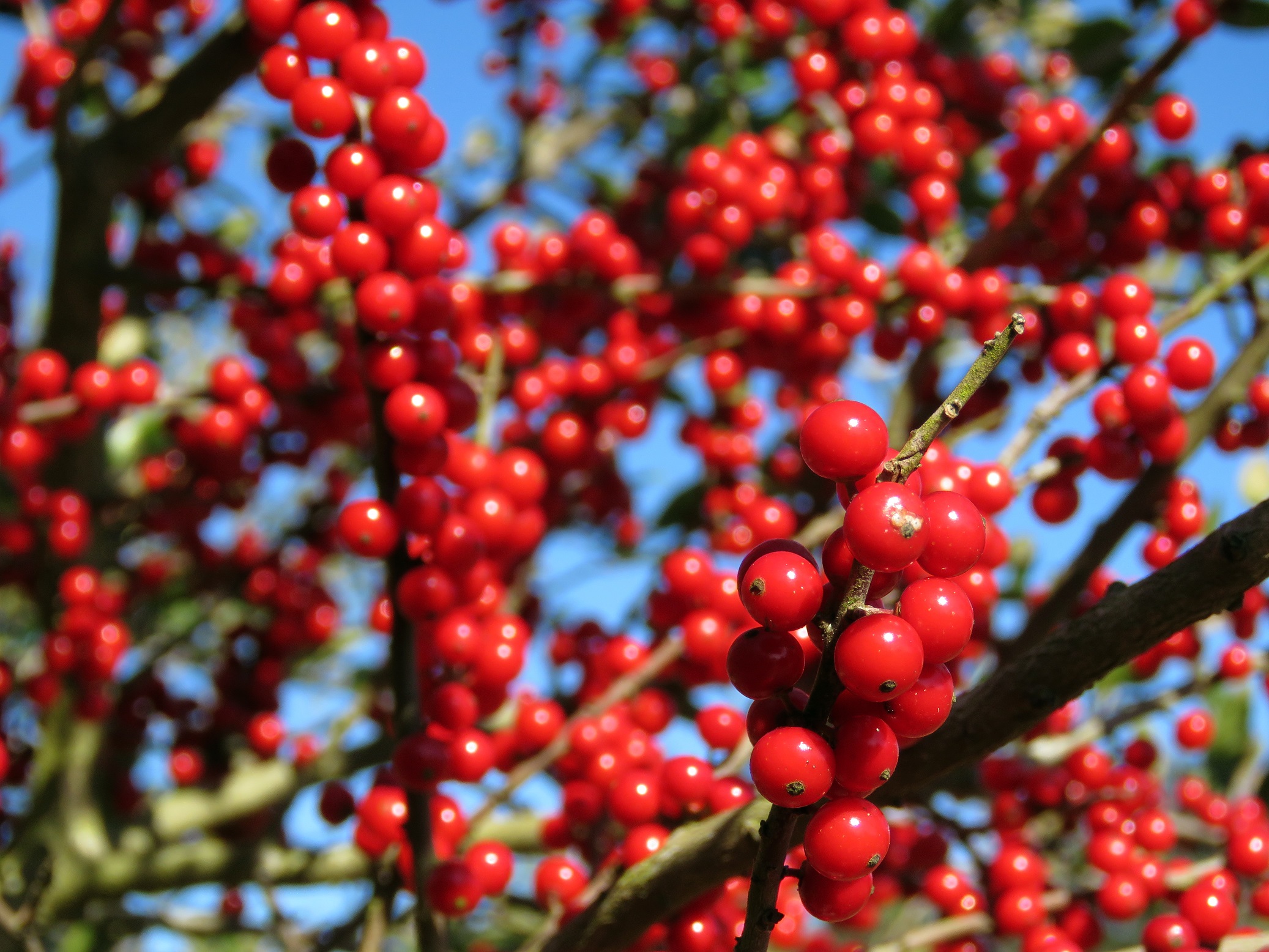






This week for Flora and Fauna Friday, we’re beginning a short 3 part series spotlighting some of our important Holiday plants! Today we’re starting with a genus of trees and shrubs that are a staple of holiday decorations: the Hollies, genus Ilex.
The Hollies are known for their evergreen leaves and showy berries. In our area, we have three common species: American Holly (Ilex opaca), Yaupon (Ilex vomitoria), and Inkberry (Ilex glabra). All have smooth light gray bark, leathery evergreen leaves, and produce a berry that is attracts wildlife, especially birds. They are partial to life in the understories of hardwood forests and don’t do well in ecosystems with frequent fires, due to their thin bark.
American Holly is the quintessential Holly. It has spiny leaves and bright red berries. It is a common addition to festive floral arrangements due to the aforementioned aesthetics of its fruits and foliage. It can grow as an upright bush or into a fairly large tree. Its small red berries provide a much needed fall and winter food source for wildlife, especially birds like the Cedar Waxwing.
Yaupon, or sometimes called Cassina, is our most common Holly on the Island. Unlike the American Holly, they grow primarily as a shrub but can still reach 20ft in height. They are a common sight along woodland edges and hedgerows where they form dense thickets with their ashen trunks. Their leaves are much smaller than those of the American Holly and lack any spines. Their fruit is a minute, glossy, crimson berry that grows along the stem. Their scientific name, Ilex vomitoria, is a misnomer and comes from the use of the plant’s leaves by Native Americans in a purifying ritual that included the use of an emetic tea to induce vomiting. However, Yaupon does not actually contain any emetic compounds and can safely be brewed into a tea for human consumption. (Its leaves even contain caffeine!)
The Inkberry is a smaller plant than the other two Hollies I’ve mentioned. It’s typically only about head height and grows in sandy woods or wetland edges. It also has black berries as opposed to the red berries of the Yaupon and American Holly. The berries contain a pink juice that can be used as an ink or dye, hence the common name. Its leaves are also spineless, like Yaupon, but are more yellowish in color.